Cuban coffee and espresso are two strong and flavorful coffee beverages that have made a name for themselves in the world of coffee lovers.
While they both pack a powerful caffeine kick and are loved for their rich taste, there are a few differences that set them apart.
From their origins and brewing methods to the unique cultural aspects surrounding them, both Cuban coffee and espresso have distinct characteristics that make them stand out.
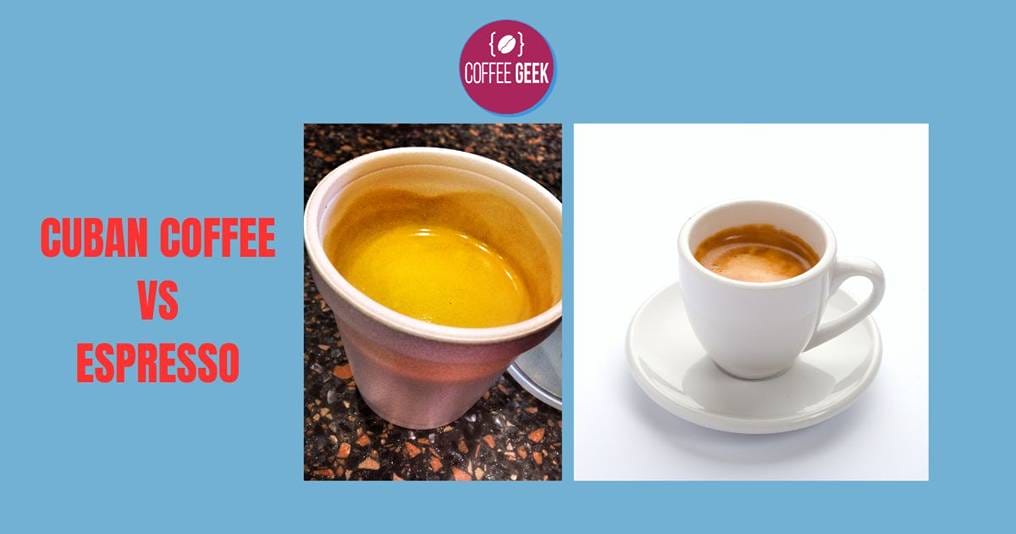
Cuban coffee, also known as cafecito or Cafe Cubano, originates from Cuba and is typically made using a stovetop espresso maker or Moka pot, creating a thick and sweet beverage.
On the other hand, espresso comes from Italy and is brewed using an espresso machine under high pressure.
These brewing methods, along with the choice of coffee beans and variations in preparation, result in two coffee drinks that, while similar in strength, offer different flavor profiles and experiences.
Key Takeaways
Cuban coffee and espresso have distinct origins, brewing methods, and cultural aspects
Differences in beans, roasting, and preparation impact the taste and experience of each drink
Both coffee beverages are known for their strong flavor, rich taste, and caffeine kick.
- The Essence of Cuban Coffee vs Espresso Coffee
- Origin and Development
- Beans and Roasting
- Brewing Methods
- Forms and Variations
- Impact of Sugar on Taste
- Anthropological and Sociological Aspects
- Comparative Analysis on Multiple Parameters
- Influence on Health
- Experiencing Cuban Coffee and Espresso
- Conclusion
- Frequently Asked Questions
The Essence of Cuban Coffee vs Espresso Coffee
When you explore the world of coffee, you’ll come across two unique and beloved beverages: Cuban coffee and espresso.
While both are strong and flavorful, there are some key differences in their taste, preparation, and caffeine content.
Cuban coffee is known for its robust and intense flavor, offering a bold, earthy aroma with a hint of sweetness from the added sugar. This sweetness comes from the addition of demerara sugar during the brewing process.
Unlike espresso, Cuban coffee typically has a sweeter and less bitter taste, making it an excellent choice when you crave a strong coffee with a bit of sweetness to it.
Espresso, on the other hand, can have a variety of flavor profiles depending on the coffee beans used and the roast level.
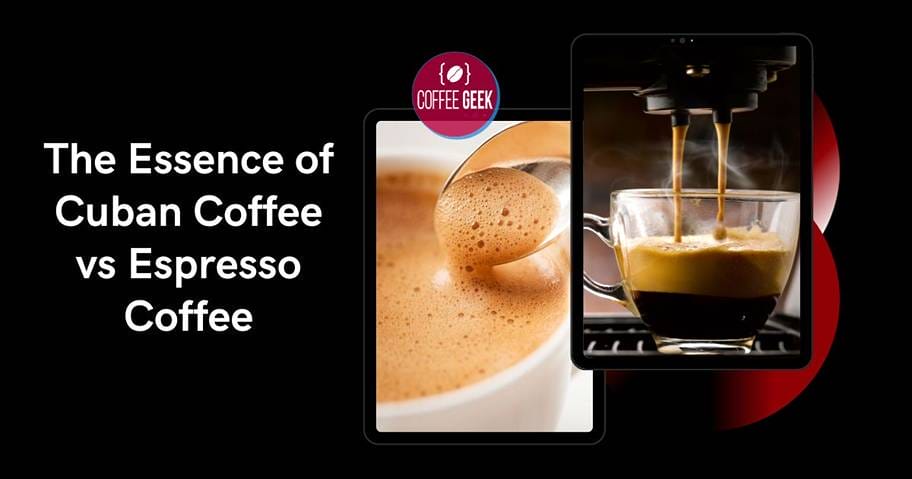
It’s known for its high caffeine content and powerful aroma, making it a popular choice for those needing a quick caffeine boost.
As for the brewing process, Cuban coffee and espresso share similarities in that both are made using high-pressure machines.
However, there is a distinct difference in how the sugar is incorporated. In Cuban coffee, sugar is added before brewing, creating a caramel-colored foam known as espuma when added to the coffee.
If you’re wondering about the strength of Cuban coffee compared to espresso, it primarily depends on the concentration and brewing methods used.
While both offer a powerful caffeine boost, the high caffeine content in espresso may sometimes give it an edge over Cuban coffee.
So, when it comes to choosing between these two delightful coffee beverages, keep in mind their unique flavors, aromas, and strengths.
Whichever you prefer, both Cuban coffee and espresso can provide an excellent and enjoyable way to experience the art of coffee making.
Origin and Development
Cuban Coffee
Cuban coffee, with its roots tracing back to 1748 when Jose Antonio Gelabert first brought coffee to Cuba, has become a significant part of the Cuban cultural heritage.
As you dive into its history, you’ll discover how Cuban coffee production flourished in the 19th and early 20th centuries, significantly contributing to the country’s economy.

During the Cuban Revolution, coffee production took a hit, and trade restrictions limited its global reach.
Despite these challenges, Cuban coffee managed to maintain its popularity, with its distinctive sweetened shot known as cafecito or Café Cubano.
Today, you can find variations like the Cortado, which pairs the Cuban coffee shot with steamed, hot milk.
Espresso
On the other hand, espresso has its origin in Italy and has become the cornerstone of American and European coffee culture.
Unlike Cuban coffee, which has a mainly consistent flavor profile, the taste of espresso varies depending on the beans’ origin, ranging from floral and fruity, to smoky and spicy.
It shares some similarities with Cuban coffee, yet it is less sweet, and the brewing techniques differ.

Given this historical context, it’s clear that Cuban coffee and Italian espresso have distinct roots and development paths.
As a lover of caffeinated beverages, you can appreciate how each coffee offers unique characteristics and flavors, showcasing the rich diversity of coffee culture around the world.
Beans and Roasting
When it comes to Cuban coffee and espresso, the beans and roasting process play a significant role in shaping their distinct flavors.
Let’s dig into how their differences affect the taste and profiles of these two beloved coffee styles.
You might know that there are two main types of coffee beans: Arabica and Robusta.
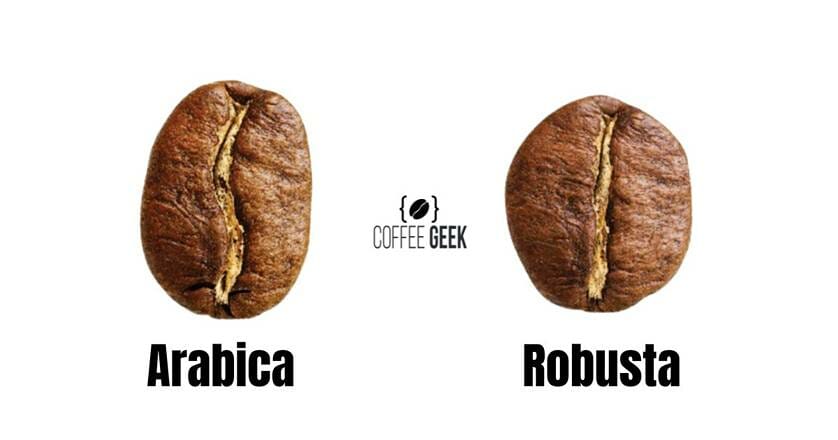
Arabica beans are generally preferred for their smoother and more nuanced flavors, while Robusta beans have a stronger, earthier taste.
Quality espresso beans typically come from the Arabica species, creating a rich and complex flavor profile.
Cuban coffee, on the other hand, often utilizes a blend of both Arabica and Robusta beans, which contributes to its intense and bold character.
The roast level of the beans also significantly impacts the final cup. Cuban coffee beans are traditionally dark roasted, resulting in a more robust and intense flavor with hints of chocolate or caramel notes.
This high level of roasting also enhances the natural oils present in the beans, giving Cuban coffee its trademark rich, velvety mouthfeel.
In contrast, espresso beans can be roasted to varying degrees, from medium to dark. A medium roast will accentuate the natural flavors of the beans and provide a balanced and smooth taste.
On the other hand, a darker roast will create a bolder, more intense espresso with pronounced bitterness and less acidity.
So, when choosing between Cuban coffee and espresso, consider the type of beans, the roast level, and your personal preferences.
Whatever you decide, you’re in for a delicious and invigorating coffee experience.
Brewing Methods
In this section, we’ll delve into the brewing methods of Cuban coffee and espresso.
We’ll explore the unique methods and equipment used to prepare each type of coffee, helping you understand how the brewing process affects the final flavor and strength of your cup.
Cuban Coffee
Cuban coffee, also known as Café Cubano or Cuban espresso shot, is a bold and sweet coffee that is commonly enjoyed throughout Cuba and South Florida.
The brewing process involves using a moka pot, which is a stovetop espresso maker that produces a concentrated coffee.
To make Cuban coffee, you’ll need finely ground coffee beans and demerara sugar, which is added to the coffee grounds before brewing.

The moka pot heats water and creates pressure, which forces the water up through the coffee grounds and sugar, resulting in a sweet and rich coffee.
The sugar caramelizes during this process, giving Cuban coffee its signature sweetness and somewhat creamy texture.
This method of brewing is unique to Cuban coffee and sets it apart from other espresso-based drinks.
Espresso
On the other hand, espresso is a popular Italian coffee that is brewed using an espresso maker, which operates at high pressure to extract a concentrated and robust coffee.
Unlike the moka pot used for Cuban coffee, espresso machines use much higher pressure (usually around 9 bars) to force hot water through finely ground coffee.
The espresso brewing process does not involve adding sugar to the grounds like in Cuban coffee, resulting in a more bitter and intense flavor.
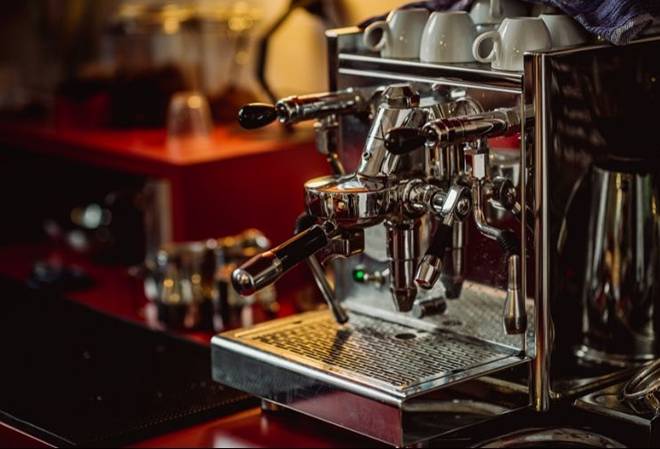
Additionally, the pressure used in espresso machines can be adjusted to suit individual preferences and different roast levels, allowing for a wider variety of flavors.
It’s worth noting that while the brewing methods of Cuban coffee and espresso have their differences, both require finely ground coffee and a pressure-driven brewing process.
Keep these methods in mind when choosing between a Cuban coffee or an espresso, as they can greatly impact the taste and strength of your caffeinated delight.
Forms and Variations
When you’re exploring the world of coffee, you’ll come across a variety of delicious beverages like Cuban coffee and espresso. They may seem similar, but there are subtle differences that make each unique.
In this section, we will discuss various forms and variations of Cuban coffee and espresso, so you can better understand their distinct characteristics.
Cuban Coffee: Also known as cafecito or Cuban espresso shot, this strong and sweet coffee is prepared using a moka pot or stovetop espresso maker.
They use a dark roast bean and add demerara sugar during the brewing process, which gives it a sweeter taste compared to regular espresso.
A popular way to enjoy Cuban coffee is in the form of a ‘Cortadito,’ which is an equal mix of Cuban espresso and warm milk, similar to a Spanish cortado.
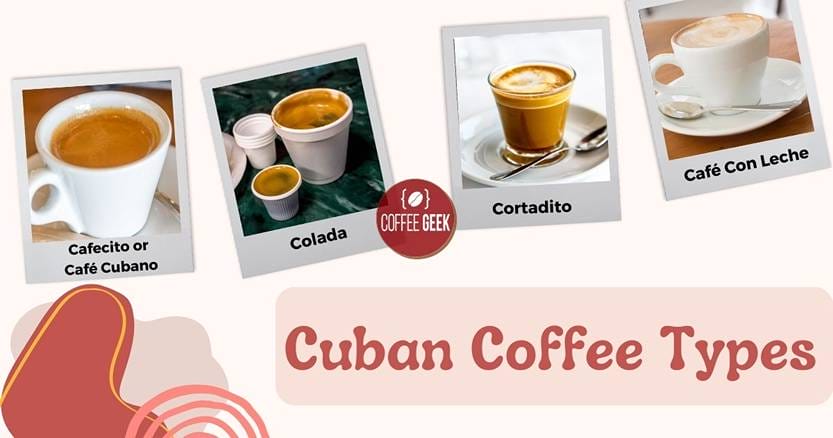
Cubano Cafe: Essentially the same as Cuban coffee, this refers to the traditional coffee served in Cuba.
This coffee gets its unique flavor from the brewing technique, dark roast beans, and sugar added during brewing. It has a bold and strong taste that matches up to espresso in terms of caffeine concentration.
Cortado: Originating from Spain, a cortado is equal parts of espresso and steamed milk. The milk is used to reduce the acidity of the espresso, creating a milder and smoother coffee experience.
It’s popular in many Latin countries, including Cuba, where it’s often referred to as a cortadito.
Café con Leche: Literally translating to “coffee with milk,” this beverage is made by combining strong coffee like Cuban coffee stronger espresso with hot or steamed milk.
It’s a staple in Cuban households and can be enjoyed at any time of the day. This coffee and milk combination offers a smoother, creamier, and less intense experience compared to pure espresso.
Italian Espresso: The classic espresso is a staple of Italian coffee culture. It’s a concentrated and strong coffee brewed by forcing hot water through finely ground beans.
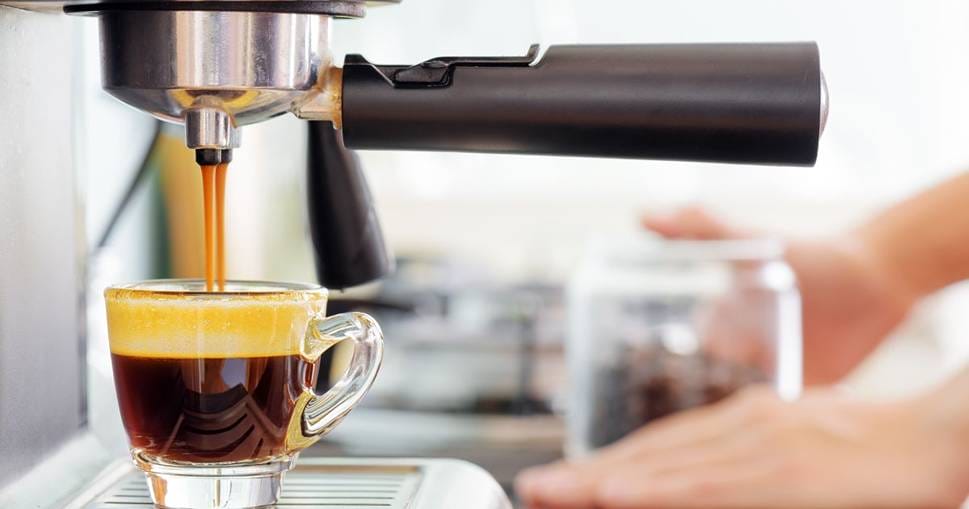
Unlike Cuban coffee, it doesn’t typically have sugar added during the brewing process and does not rely on dark roast beans.
The quality and intensity of an Italian espresso are typically determined by the skill of the barista and the beans used.
Latte: Commonly associated with Italian coffee culture, a latte is made by combining a shot of espresso with steamed, hot milk and finished with a small amount of milk foam.
While it shares similarities with café con leche and cortado, the difference lies in the milk-to-coffee ratio, which is typically higher in lattes, resulting in a creamier and milder beverage.
Each of these coffee variations has a unique history, flavor profile, and preparation method.
Whether you choose a sweet taste and strong Cuban espresso, a classic and bold Italian espresso, or a creamy and smooth latte, there’s something for every type of coffee lover.
So go ahead and try out the different forms and see which one best suits your taste buds.
Impact of Sugar on Taste
When it comes to Cuban coffee and espresso, the role sugar plays in their taste profiles is quite significant. First off, let’s talk about the types of sugar used. In Cuban coffee, you’ll typically find demerara sugar being used.
Demerara sugar is a partially-refined, large-grained sugar with a unique, molasses-like flavor that adds a layer of sweetness to your coffee.
On the other hand, espresso usually doesn’t contain any added sugar, relying on the coffee beans’ natural sweetness.
However, if you wish to sweeten your espresso, granulated sugar is commonly added by the person drinking it, rather than during the brewing process.
Now let’s discuss how sugar impacts taste. In Cuban coffee, the demerara sugar is added to the grounds before brewing.
As a result, the sugar caramelizes during the brewing process, giving the coffee its signature sweet taste and creating a delightful sugar foam, known as “espuma,” on top of the coffee.
This added sweetness complements the bold, earthy flavors of the Cuban coffee, making it a delicious treat.
Espresso, as mentioned earlier, relies on the beans’ natural sweetness, providing a range of flavor profiles. The absence of added sugar means that the taste of espresso primarily showcases the brewed coffee flavors and the roast level.
As a result, espresso can often be more intense and less sweet compared to Cuban coffee.
Even though sweetness in espresso is subjective and up to your personal preference, you might find adding a bit of granulated sugar or even sweetened condensed milk to be a suitable choice depending on how you enjoy your coffee.
Just remember that when you add any form of sugar, it can change the overall taste and flavor profile of your coffee experience.
So there you have it, the impact of sugar on the taste of Cuban coffee and espresso!
Whether you prefer the bold, caramelized sweetness of Cuban coffee, or the pure intensity of espresso, sugar’s involvement can make all the difference in your coffee drinking experience.
Anthropological and Sociological Aspects
As a coffee enthusiast, you’ll find unique and interesting aspects in the anthropological and sociological realm of Cuban coffee and espresso.
Coffee, beyond its delicious taste and captivating aroma, has long been a part of different traditions and social interactions.
When exploring Cuban coffee culture, it’s important to recognize the significance it holds for Cubans.
A critical element of their hospitality and bonding, Cuban coffee breaks often involve sharing a cafecito with friends and family.
Traditionally served in a small cup or even a Styrofoam cup to maintain the intense flavor, Cuban coffee is an integral part of their identity.
It’s not just about the drink, it’s about the experience and connections it facilitates.
While Cuban coffee is prevalent in Miami and other Cuban-American communities, espresso boasts a global reach. Similarly rooted in Italian culture, espresso is known for its strength and robust flavor.
It might be your personal preference if you prefer a more minimalist coffee experience. Plus, it lets you savor Italian tradition and artisan craftsmanship through carefully crafted espresso shots.
It’s fascinating how two different coffee drinks can carry such rich and varied traditions.
Whether you’re enjoying a Cuban coffee in Key West, Miami or sipping an espresso in Rome, there’s no denying the unique anthropological and sociological aspects of these iconic beverages.
Make sure to embrace the experience and understand the role coffee plays in various cultures, as you indulge in these distinct flavors and preferences.
| Characteristic | Cuban Coffee | Espresso |
|---|---|---|
| Origin | Cuba | Italy (originally) |
| Coffee Bean | Typically Arabica and Robusta blend | Any high-quality coffee bean |
| Grind Size | Fine | Very fine |
| Brewing Method | Espresso machine or stovetop Moka pot | Espresso machine |
| Brewing Time | Short (30 seconds to 2 minutes) | Short (25-30 seconds) |
| Flavor Profile | Strong and robust, sweet, with hints of chocolate | Intense, concentrated, and bold with a balanced flavor |
| Serving Size | Small (1-2 ounces) | Small (1 ounce) |
| Serving Style | Often sweetened with sugar | Served plain or with a twist of lemon peel |
| Popular Variations | Café Cubano (sweet espresso with sugar) | Americano, Latte, Cappuccino, Macchiato |
| Caffeine Content | High | High |
| Cultural Significance | Integral part of Cuban social life | Iconic in Italian coffee culture |
Comparative Analysis on Multiple Parameters
Taste and Flavor
When it comes to taste and flavor, both Cuban coffee and espresso offer a rich and bold experience.
However, some differences set them apart. Cuban coffee incorporates sugar during the brewing process, resulting in a sweeter and less bitter taste compared to espresso.
On the other hand, espresso showcases a more robust and slightly bitter flavor due to its thick consistency and higher total dissolved solids.
Preparation
The way you prepare Cuban coffee and espresso differs as well. Cuban coffee is traditionally made with a stovetop espresso maker called a Moka pot.
This method allows sugar to mix with the coffee, creating a unique creamy texture known as “espuma”.
Espresso, however, requires an espresso machine that forces hot water through finely-ground coffee under high pressure. This process generates a thinner, silky layer of foam called “crema”.
While both beverages are served in small cups, the preparation techniques impact their taste and overall presentation.
Caffeine Content
Caffeine content is an important consideration for many coffee drinkers. The strength of Cuban coffee comes from its brewing process, use of dark roast beans, and added sugar during brewing.
In terms of caffeine concentration, Cuban coffee matches espresso, making both drinks espresso and Cuban coffee stronger than your regular American coffee.
So, when it comes to getting a drip coffee caffeinated boost, you can rely on both Cuban coffee and espresso to deliver.
Influence on Health
When it comes to the health effects of Cuban coffee and espresso, there are a few key factors to consider. Firstly, let’s talk about caffeine.
Both beverages are made with espresso, so they naturally carry the same amount of caffeine. This means they can potentially provide that much-needed energy boost when you need it most.
Now, let’s discuss antioxidants. Both Cuban coffee and espresso contain antioxidants, which are essential for good health as they help fight harmful free radicals in your body.
These antioxidants come from the beans themselves, so no matter which beverage you choose, you’ll be getting the benefits antioxidants provide.
However, there’s one aspect where these two drinks differ significantly: added sugar. Cuban coffee is known for its unique preparation method, which involves combining sugar with coffee grounds before brewing.
This process creates a rich, caramel-colored foam called “espuma” when the coffee is added to the cup.
While this adds to the flavor of Cuban coffee, it also contributes to its sugar content.
In contrast, espresso typically doesn’t have sugar added during the brewing process. Instead, sugar may be served on the side, allowing you to decide how much (if any) to add to your drink.
With the added sugar in mind, it’s important to be aware of your overall sugar intake, as consuming high amounts of sugar over time can contribute to health issues, such as obesity, heart disease, and type 2 diabetes.
To sum it up, both Cuban coffee and espresso offer similar benefits in terms of caffeine and antioxidants.
However, if you’re watching your sugar intake, you might opt for a traditional espresso so that you can control the amount of added sugar in your drink.
Experiencing Cuban Coffee and Espresso
When you step into a coffee shop, you may notice the barista preparing various caffeinated concoctions.
As a coffee aficionado, you might be curious to explore the differences between Cuban coffee and espresso. Let us dive into the unique aspects of these two beverages.
Cuban coffee, also known as cafecito, is traditionally made using a small espresso-type machine or a moka pot.
It’s different from your regular espresso because of the demerara sugar added during the brewing process, giving it a sweeter taste.
The bold flavors and sweetness make it a perfect drink to enjoy with a variety of pastelitos, a traditional Cuban pastry.
On the other hand, Italian espresso is known for its intense flavor profile and signature crema on top.
While sipping espresso, you get to experience the rich aroma and powerful taste that embodies the essence of Italian coffee culture.
In terms of strength, Cuban coffee and espresso carry the same amount of caffeine, but their flavors and brewing styles are what set them apart.
So next time you visit your favorite coffee shop, don’t hesitate to ask the barista about their offerings and learn more about each drink’s distinct characteristics.
Conclusion
Cuban coffee and Italian espresso are two coffee-based drinks cherished by coffee aficionados worldwide for their strong and concentrated coffee essence.
Both are typically brewed using a finer grind of coffee beans to enhance the coffee’s flavors and are served in small quantities due to their richness.
Frequently Asked Questions
What’s the difference between Cuban coffee and espresso?
Cuban coffee and espresso may appear similar, but they have some key differences.
While both are prepared with finely ground coffee and hot water, Cuban coffee typically includes demerara sugar added before brewing, providing a sweeter and less bitter taste.
The brewing methods also differ, as Cuban coffee is traditionally made using a stovetop espresso maker called a Moka pot, while espresso machine use high pressure for extraction.
How is a cortadito related to traditional Cuban coffee and espresso?
A cortadito is a popular Cuban drink that combines a shot of Cuban coffee with steamed or warmed milk, usually served in a small cup.
It shares some similarities with espresso-based drinks such as a cappuccino or a cortado, but the key difference is the use of Cuban coffee as its base, which brings its distinct flavor.
Can we make Café Cubano using an espresso machine?
Yes, you can make Café Cubano using an espresso machine, since the brewing process for Cuban coffee and espresso is similar.
However, remember to add sugar before brewing to achieve the signature sweetness of Café Cubano. You may need to experiment with the amount of sugar to find the perfect balance for your taste.
What makes a cafecito stand out?
A cafecito, also known as a Cuban espresso or Cuban coffee, stands out due to its unique preparation, incorporating sugar at the beginning of the brewing process.
This results in a sweeter and less bitter coffee, often with a caramel-like flavor.
Additionally, the Moka pot used for brewing creates a rich, full-bodied coffee that differs from the high-pressure extraction of a traditional espresso.
What goes into a Cuban coffee colada?
Cuban coffee colada is a larger serving of Café Cubano meant to be shared with others.
It typically contains several shots of sweetened Cuban coffee, served in a larger cup or Styrofoam container, along with small, disposable cups for sharing.
It’s a popular way to enjoy making Cuban coffee as a social experience with friends, family, or coworkers.
Where can I find authentic Cuban coffee beans?
To find authentic Cuban beans, look for specialty coffee retailers, Cuban food stores, and online coffee shops that carry beans from Cuba or blends prepared specifically for Cuban-style coffee.
Keep in mind that due to import regulations and limited availability, true Cuban beans may be more challenging to find. However, you can still find some high-quality alternatives such as Cafe La Llave to enjoy at home.


